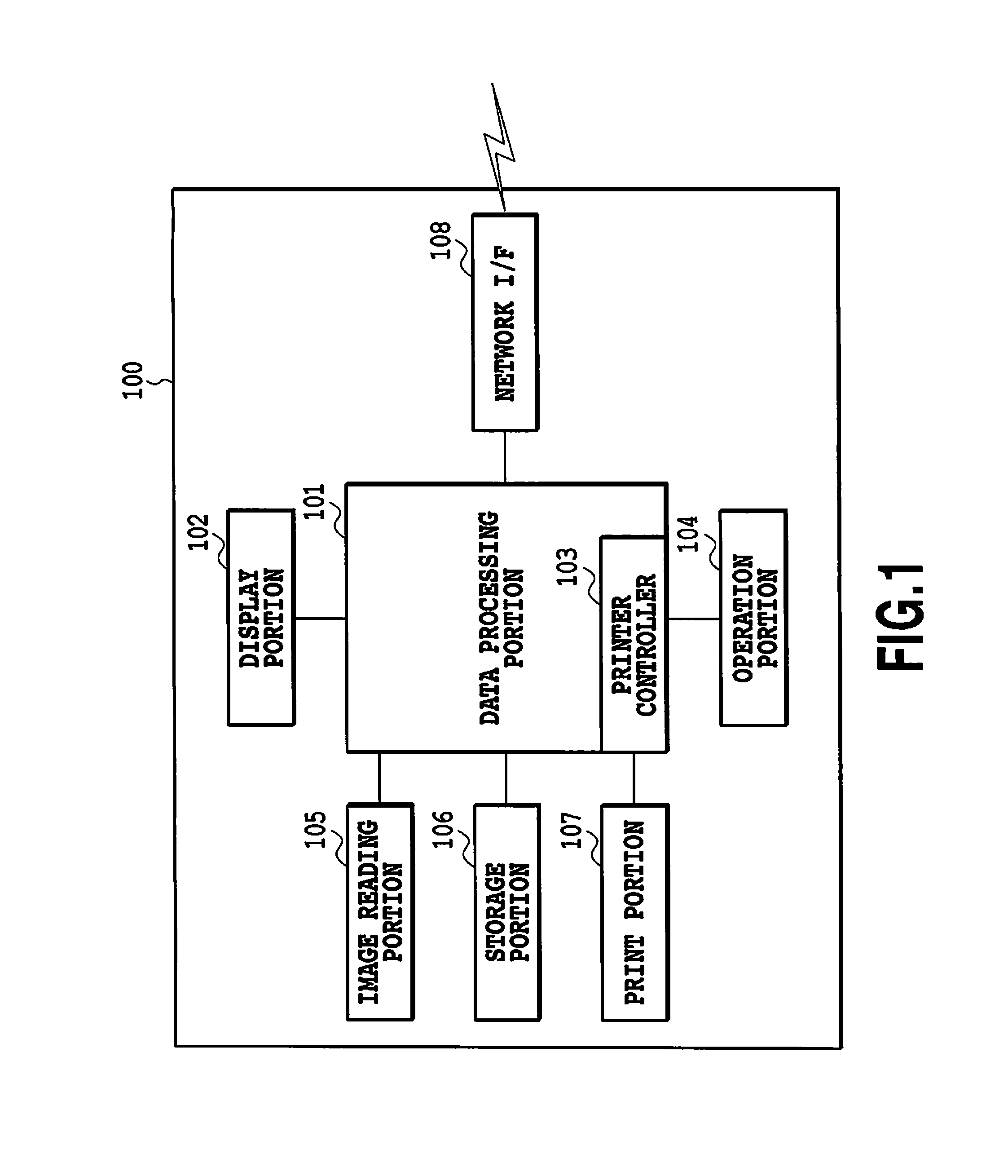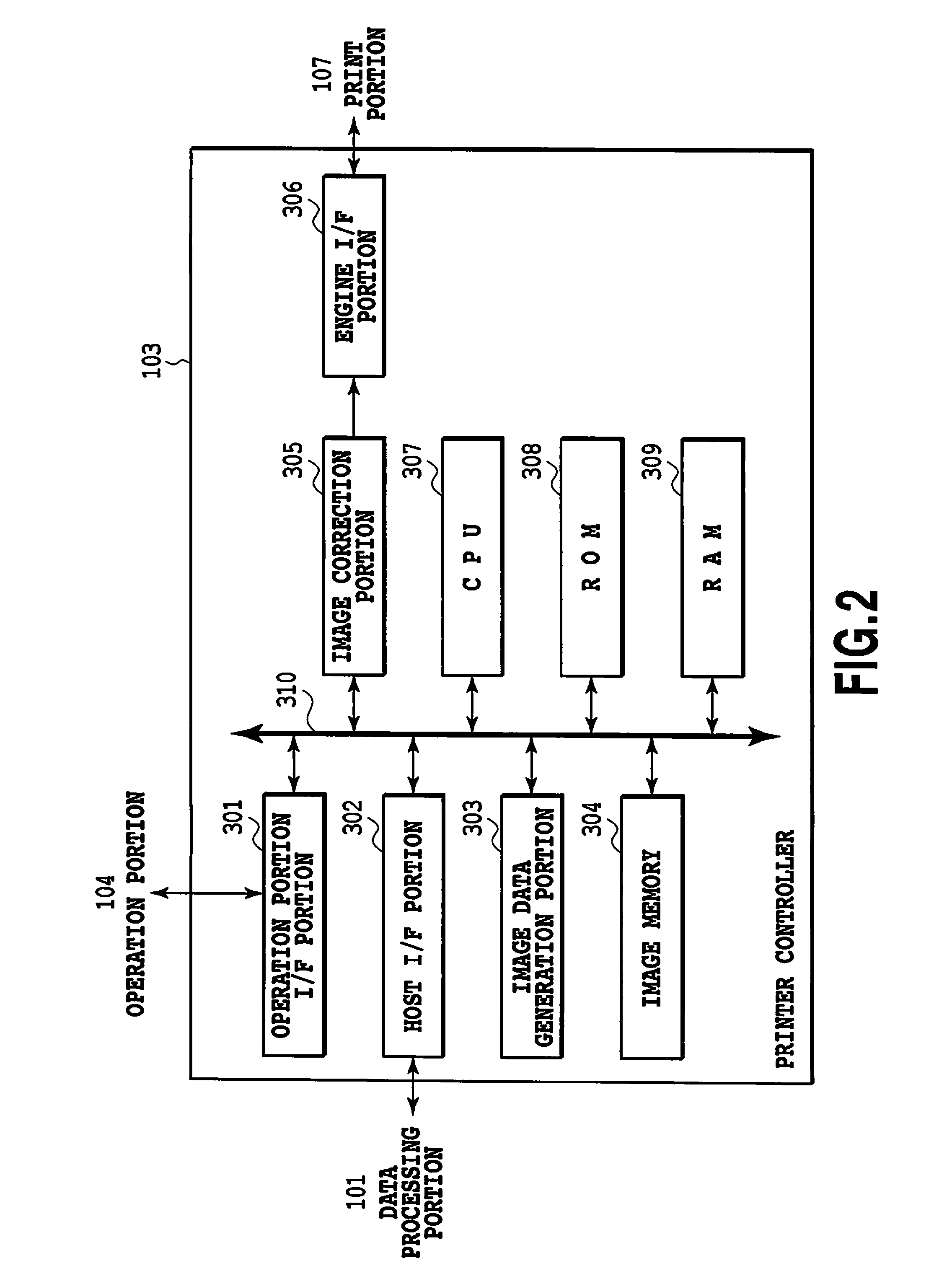Image forming apparatus and image forming method for correcting registration deviation
a technology of image forming and registration deviation, which is applied in the direction of digitally marking record carriers, visual presentation using printers, instruments, etc., can solve the problems of increasing the size of the circuit for correcting the bitmap image data, increasing the cost, and registering deviation, so as to improve the performance of memory access
- Summary
- Abstract
- Description
- Claims
- Application Information
AI Technical Summary
Benefits of technology
Problems solved by technology
Method used
Image
Examples
first embodiment
[0030]FIG. 1 is a block diagram illustrating the configuration of a color image forming apparatus 100 according to a first embodiment of the present invention.
[0031]This image forming apparatus 100 is configured with, for example, a multi-function peripheral (MFP) which is a composite device achieving a plurality of types of functions. The image forming apparatus 100 is connected through a network I / F 108 to a network, utilizes the network and can thereby exchange various types of information such as image data with an external device connected to the network.
[0032]In FIG. 1, an image reading portion 105 including a platen and an auto document feeder (ADF) illuminates, with a light source, stacked sheets of or a sheet of original document image on the platen, and forms, with a lens, an image reflected off the document on a solid-state image pickup element (not shown). Thus, the image reading portion 105 can obtain a raster-shaped image reading signal from the solid-state image picku...
second embodiment
[0065]A description has been given of the example where the low resolution correction processing portion 404 takes over the second memory 406 in the image correction portion 305 shown in FIG. 4. The image memory 304 and the second memory 406 are often included as an external memory device of an integral circuit device such as an ASIC. When a large number of components are required as described above, the number of components is increased, and this leads to the increase in the cost. Hence, in the second embodiment, a description will be given of a case where the second memory 406 and the image memory 304 are shared.
[0066]FIG. 7 is a diagram showing a configuration in which one region of the image memory 304 is used as the second memory 406. The low resolution correction processing portion 404 shown in FIG. 7 reads and writes bitmap data through a system bus 311, and thereby performs the low resolution correction processing.
third embodiment
[0067]In the first and second embodiments, a description has been given of the example where the nigh resolution correction processing is performed on the upstream side of the image correction portion, and the low resolution correction processing is performed on the data that has been subjected to the high resolution correction processing. However, a configuration in which the second memory 406 and the image memory 304 are shared and the order of connection between the low resolution correction processing portion 404 and the high resolution correction processing portion 403 is changed can be considered. FIG. 8 is a diagram showing such a configuration. In the low resolution correction processing portion 404 shown in FIG. 4, the input bitmap data is first written in the second memory 406, and, when it is then read, the read address is changed based on RegSegPosL[i]. When the low resolution correction processing portion 404 shown in FIG. 8 reads the image data from the image memory 30...
PUM
 Login to View More
Login to View More Abstract
Description
Claims
Application Information
 Login to View More
Login to View More - R&D
- Intellectual Property
- Life Sciences
- Materials
- Tech Scout
- Unparalleled Data Quality
- Higher Quality Content
- 60% Fewer Hallucinations
Browse by: Latest US Patents, China's latest patents, Technical Efficacy Thesaurus, Application Domain, Technology Topic, Popular Technical Reports.
© 2025 PatSnap. All rights reserved.Legal|Privacy policy|Modern Slavery Act Transparency Statement|Sitemap|About US| Contact US: help@patsnap.com



